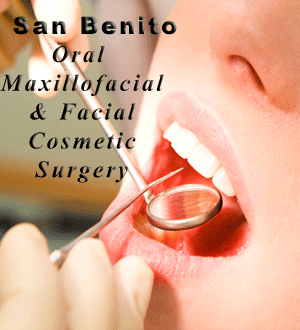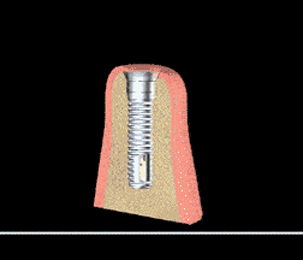The Dental Implant Procedure
Dental implant surgery is a procedure that replaces damaged or missing teeth with artificial teeth that look and function much like real ones. Dental implant surgery can offer a welcome alternative to ill-fitting dentures or bridgework.
How dental implant surgery is performed depends on the type of implant and the condition of your jawbone. But all dental implant surgery occurs in stages and involves several procedures.
The major benefit from implants is solid support for your new teeth - a process that requires the bone to heal tightly around the implant. Because healing requires time, the process can take many months.
The Surgical Procedure:
Dental implants are surgically placed in your jawbone, where they serve as the roots of missing teeth. Because the titanium in the implants fuses with your jawbone, the implants won't slip, make noise or cause bone damage the way fixed bridgework or dentures might. And the materials used can't decay like your own teeth that support regular bridgework can.
The implant treatment consist of three phases:
- Phase 1: The placement of the implants
- Phase 2: Uncovering of the implant
- Phase 3: The fitting of the new replacement teeth
How Are Dental Implants Placed?
Phase 1:
The dental implant procedure is usually done in the office setting under intravenous sedation or general anesthesia. The procedure usually takes about one hour for one implant and typically no more than two or three hours for multiple implant cases. The placement procedure is usually with little pain involved. Adjunctive procedure like a bone graft can make the surgery more difficult and increase the surgery time. After the dental implant surgery the implant rests (sleeps) for 3-8 months under the gum tissue. During this time you will be able to wear dentures or a temporary teeth replacement as well as maintain normal activity.
About your dental implant procedure: We will give you preoperative medications, if indicated, before surgery and then administer a local anesthetic to numb the areas being treated. You may also prefer to be sedated using intravenous medications.
After you are comfortable, we will make a small incision into the gum tissue, revealing the bone into which the implant is placed. Using specialized instruments, we will then very carefully create a socket, avoiding damage to the bone. We will then insert the titanium implant into the socket. Sutures (or stitches) will then be used to close up the gum tissue.
After the implant is placed, the area will need to heal for three to six months. We will provide follow-up care, usually three to five office appointments, to ensure that the implants have healed appropriately and are ready for the restorative phase of your treatment.
Phase 2:
The next phase Is the uncovering and the examination of the dental implant. This short and painless procedure is done under local anesthesia or intravenous sedation. Dr. Carr will connect a small metal post, called an abutment, to the implant. The new replacement tooth will later attached to the post. 10-14 days after this procedure you can see your family dentist for the final phase of your treatment.
Phase 3:
The last and long awaited end point of the treatment is reached. This phase involves a series of appointments with your dentist for impressions and try-in of your future teeth. This phase of your treatment takes usually 4 weeks.
About Us
Dr. Brian Carr holds a both a Dental Degree and Medical Degree. He is a member of the the American Association of Oral and Maxillofacial Surgeons (AAOMS) and a diplomate of the American Board of Oral & Maxillofacial Surgery (ABOMS). Dr Carr is an Associate Clinical Professor at UCSF and has taught facial trauma reconstruction at Zuckerberg San Francisco General Hospital for several years. Dr. McBride has been practicing oral and maxillofacial surgery in the Hollister, California area for over twenty years. He is also a Clinical Assistant Professor in the Department of Oral and Maxillofacial Surgery at University of California San Francisco.Our staff is highly trained and qualified to handle all of your needs. We invite you to come in for a consultation.
We are here to answer your questions, please give us a call at (831) 636-9808 or please use our contact page.
More Information
 Thanks to research breakthroughs, clinical advances and instrumentation innovations pioneered by skin surgery experts, the majority of cosmetic surgeries is now minimally invasive and requires only local or regional anesthesia. This translates into superior patient safety while reducing the all-important "downtime" and recovery period. In addition, new developments and the latest techniques are constantly enhancing the results of many established skin surgery procedures.
Thanks to research breakthroughs, clinical advances and instrumentation innovations pioneered by skin surgery experts, the majority of cosmetic surgeries is now minimally invasive and requires only local or regional anesthesia. This translates into superior patient safety while reducing the all-important "downtime" and recovery period. In addition, new developments and the latest techniques are constantly enhancing the results of many established skin surgery procedures.  Did you know that dental implants are frequently the best treatment option for replacing missing teeth? Rather than resting on the gum line like removable dentures, or using adjacent teeth as anchors like fixed bridgers, dental implants are long term replacements that your oral and maxillofacial surgeon surgically places in the jawbone.
Did you know that dental implants are frequently the best treatment option for replacing missing teeth? Rather than resting on the gum line like removable dentures, or using adjacent teeth as anchors like fixed bridgers, dental implants are long term replacements that your oral and maxillofacial surgeon surgically places in the jawbone.Call our offices at (831) 636-9808
Our experienced and professional office staff members are here to help you with all your questions.
We are conveniently located in Hollister, California in San Benito County at 890 Sunset Drive, Suite B-1A in Hollister, CA 95023. Our telephone number is (831) 636-9808. For driving instructions, click here.
Refer a patient by sending secure referrals, attach X-rays and other documents and communicate securely with our clinic.
Refer a patient to San Benito Oral Surgery
Para más información llame a nuestra oficina
(831) 636-9808
Bienvenidos a la oficina de Dres. McBride y Carr. Una práctica para el tratamiento de problemas de los dientes, las mandíbulas y encara.
Somos situados en el Condado San Benito en 890 Sunset Drive, B-1A, Hollister, CA 95023.



 In just a short time, you can melt the years away from your face, looking natural and refreshed. Dr. Carr can provide temporary improvements, such as botox to more permanent solutions such as a neck lift or facial implants,
In just a short time, you can melt the years away from your face, looking natural and refreshed. Dr. Carr can provide temporary improvements, such as botox to more permanent solutions such as a neck lift or facial implants, 